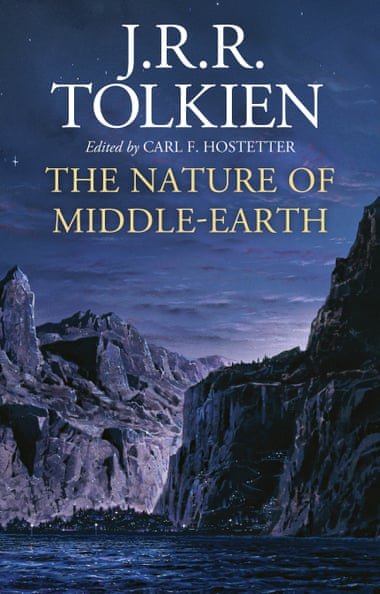
07 Sep Book Review of The Nature of Middle-Earth
The Nature of Middle-Earth: A Journey into Tolkien’s Imagination
As someone who has immersed myself in Tolkien’s vast universe—having tackled all 12 "History of Middle-earth" books, the two-part "History of the Hobbit," and now The Nature of Middle-Earth—I felt an irresistible pull to dive into this latest release. It’s as if I’ve passed an elaborate test set within the pages of Arda: I will diminish, and go into the West and remain Mitchell, a devoted traveler on this literary journey.
Tolkien’s writings, always a feast for the imagination, unfold like a well-worn map, leading the reader into hidden corners of his creation. In The Nature of Middle-Earth, his posthumously published notes and essays illuminate facets of Middle-earth that many fans, including myself, had long speculated about. Themes like the evolution of Elven life, the concept of aging, and the relationships within Tolkien’s legendary races come to life with vigorous detail that’s thrilling to digest.
At the heart of this exploration lies an intricate tapestry of lore, woven with the key threads of timeless questions: What does it mean to grow old? How do love and sacrifice intertwine in the fate of the Elves? It’s almost a philosophical musing on existence wrapped in a fantastical narrative. Insights like how Elven children once developed full speech at six, or how Arwen transitioned into the mortal realm of aging, resonate deeply. With every revelation, I found myself reflecting on the characters’ choices and the weight of their destinies in a world that feels both familiar and achingly distant.
Tolkien’s prose, whimsical yet profound, reads like an elegant ballet of words, pacing comfortably enough to let readers linger on the more intricate thoughts. Highlights, such as the revelation that Eärendil’s choice affected only his children and that Indemmar and Osanwé were forms of telepathy offered a tantalizing glimpse into the layers of connection among the characters. I particularly enjoyed how these notes felt like conversations with the author—almost as if he were pointing out delightful details that I had missed before.
The book’s structure, which combines scholarly notes with engaging narrative style, is both academic and friendly. It invites the reader not just to understand, but to connect with the heart of Tolkien’s worldview. I found myself marking pages, jotting down quotes, and mentally turning over the implications of concepts like Erma and various cultural practices from Númenor.
For fellow Tolkien enthusiasts, this book is a treasure trove of insights that extend beyond even the intricate layers of The Silmarillion. It’s perfect for those who have wondered about the deeper mechanics of existence within Middle-earth or for anyone fascinated by the finer details of world-building. While it’s undeniably a must-read for dedicated fans, even those new to Tolkien may find joy in exploring how myths shape human experience—something that is timeless and universally resonant.
In conclusion, The Nature of Middle-Earth did not just deepen my appreciation for Tolkien’s world; it reinforced the enduring magic of stories that knit together our shared humanity. As I closed the book, I felt a renewed sense of wonder and connection, eager to continue my explorations—both of Middle-earth and beyond.
Discover more about The Nature of Middle-Earth on GoodReads >>









